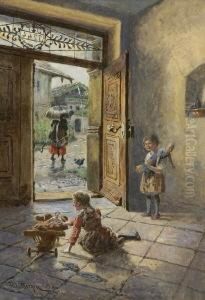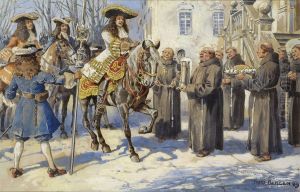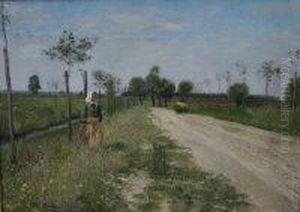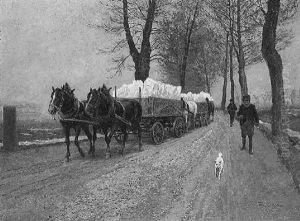Fritz Bergen Paintings
Fritz Bergen was a German artist, illustrator, and painter known for his contributions to the field of book illustration as well as his historical and genre paintings. Born on July 4, 1857, in Dresden, Germany, Bergen was part of the late 19th and early 20th-century European art scene, a period marked by a variety of artistic movements and styles.
Bergen showed an early aptitude for art and pursued formal training at the Dresden Academy of Fine Arts, where he honed his skills in drawing and painting. His education continued as he traveled and worked in different art centers of Europe, including Munich, which was a hub for artists and intellectuals at the time.
His work is characterized by meticulous attention to detail and a traditional approach to composition and technique. Bergen’s illustrations often featured scenes from history, mythology, and literature, displaying a narrative quality that made them suitable for the books and periodicals of his time. He also painted portraits, landscapes, and military subjects, reflecting the interests and tastes of the period.
During his career, Fritz Bergen contributed illustrations to various publications, which helped disseminate his work to a broader audience. His illustrations were often used in children's books, adventure stories, and educational texts, which were popular genres during his lifetime. These contributions made him a well-known figure in the field of German book illustration.
Bergen's work was part of a larger context of European art that encompassed movements such as Romanticism, Realism, and the early stages of Modernism. While his style was rooted in the academic and realist traditions, the changing artistic landscape of the early 20th century saw a shift in public taste and the emergence of new art forms, which may have influenced his later work.
Fritz Bergen remained active in the art world throughout his life. He passed away on May 24, 1941, in Munich, leaving behind a legacy as a skilled illustrator and painter who captured the spirit of his time through his detailed and narrative-driven artwork. His works continue to be of interest to collectors and historians who study the art and culture of the late 19th and early 20th centuries.
















